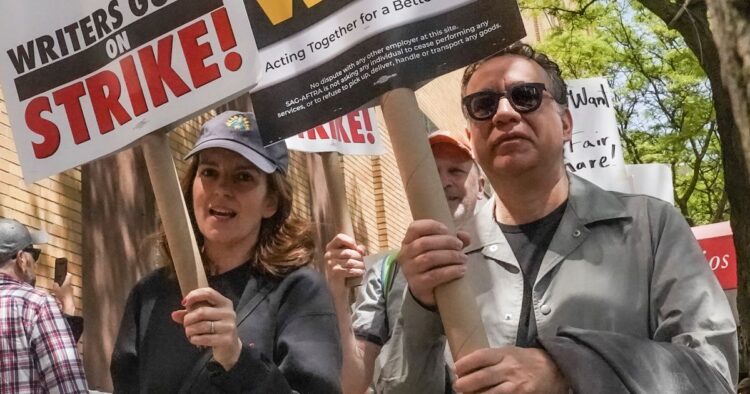The Hollywood entertainment industry, a perennial beacon of creativity and glamor, appears to be teetering on the precipice of another labor upheaval. This palpable tension, which echoes past strikes that have left indelible marks on the industry, is eliciting a mixture of anxiety and intrigue among actors, writers, and producers alike. The current situation suggests that the artists within this vibrant sphere are not merely reacting to immediate grievances, but are signaling an engagement with broader systemic issues that transcend their profession.
Commonly perceived as a battleground for fair wages and improved working conditions, the looming strike taps into deeper currents. Many industry insiders express concern about the increasing commodification of creative labor. As mainstream entertainment leans heavily towards profit-driven blockbuster spectacles, individual artistic expression risks being overshadowed. This begs the question: are we witnessing a grassroots resurgence of solidarity, or merely a reactionary moment fueled by economic necessity?
The intricate web of relationships between studios, networks, and the performers has become increasingly strained. Actors, many of whom are now voicing their frustrations publicly, highlight the disparity between the lavish lifestyle of studio executives and the grueling conditions faced by the talent. Compounded by the rise of streaming platforms, the traditional revenue models have morphed, often to the detriment of the artists themselves. The proliferation of content necessitates not just quantity, but also quality—which has been increasingly challenging to maintain under the current economic pressures.
Moreover, social media platforms provide a forum for unfiltered dialogue, enabling actors to form connections and alliances that previously may have been relegated to the shadows. This digital shift allows for a collective voice that can amplify grievances, uniting individuals against corporate juggernauts. The narrative has evolved; what was once considered private discontent is now a public discourse, enriching the context of this impending strike.
Additionally, the industry grapples with the ramifications of technological advancements. The rise of artificial intelligence poses new challenges, raising ethical concerns about the future of creative work. As studios explore cost-saving technologies, artists are rightfully concerned about their displacement and the potential erosion of their craft. This anxiety further fuels the urgency of the labor movement and a push for proactive regulations in the face of inevitable change.
As Hollywood prepares for this potential strike, it becomes increasingly evident that this is not merely a labor dispute; it is a clarion call for reevaluation of the power dynamics at play. The people who bring stories to life—with their talent and sweat—are demanding acknowledgment and respect for their contributions. Ultimately, the outcome will shape not just contractual agreements, but the very essence of what it means to create art in a rapidly evolving landscape.
